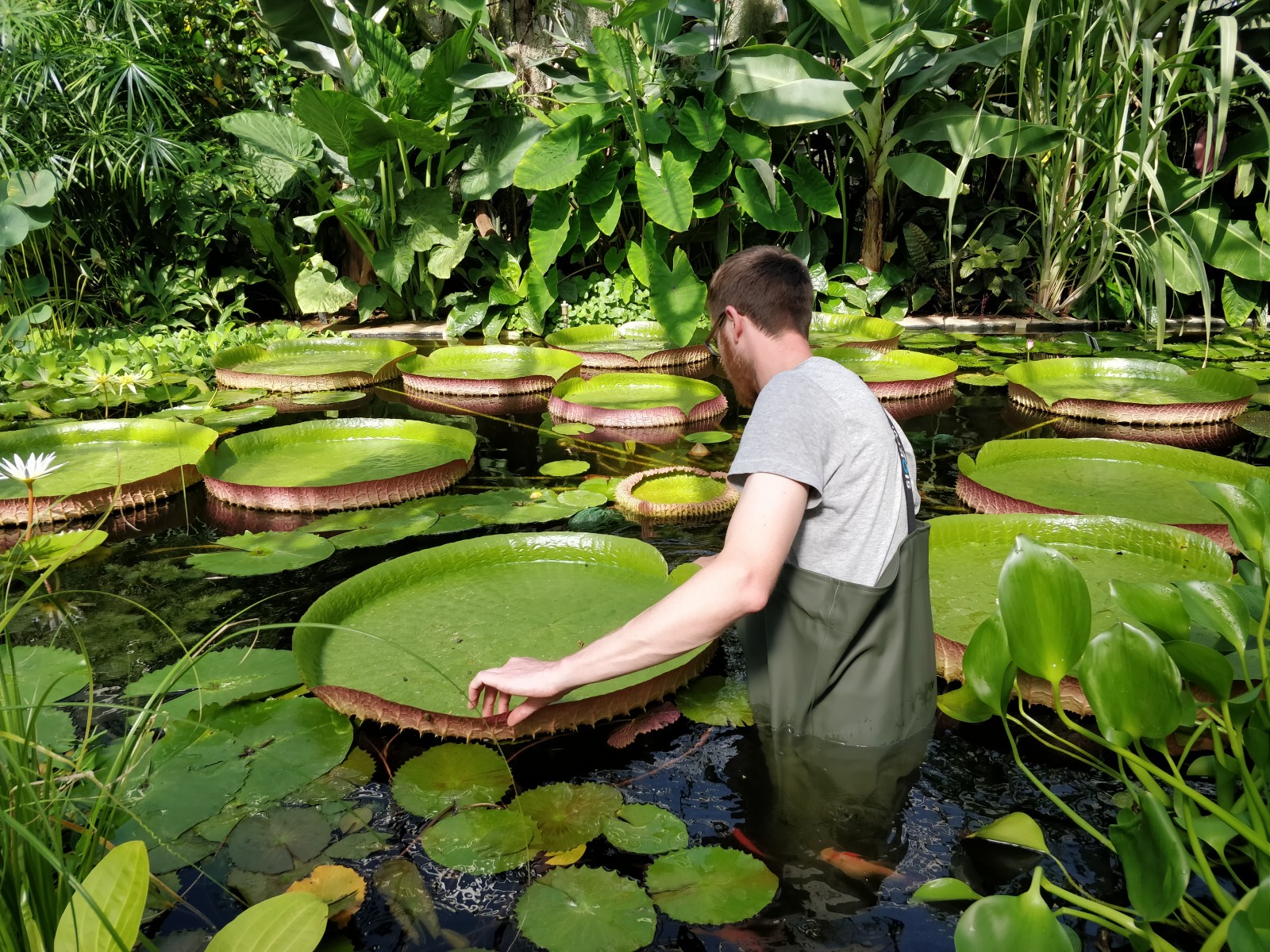Unlocking the mechanical secrets of giant Amazonian waterlilies
Researchers studying giant Amazonian waterlilies have unravelled the engineering enigma behind the largest floating leaves in nature.
In a study published today in , researchers found that the distinctive pattern on the underside of the gargantuan leaves is the secret to the success of the giant Amazonian waterlily (genus Victoria).
The criss-cross framework makes up the vascular structure of the lily pad (or leaf), supporting its large surface area and keeping it afloat. The giant leaves can grow 40cm a day, reaching nearly 3m in diameter �����Ƶ� ten times larger than any other species of waterlily �����Ƶ� and carry the weight of a small child.
Dr Finn Box, Royal Society University Research Fellow, School of Physics and Astronomy at The University of Manchester explained: �����Ƶ�Leaf size is usually restricted mechanically by the expense of maintenance. A larger surface area for photosynthesis uses more of the plant�����Ƶ�s energy to maintain. The structure and load-bearing properties of the giant Amazonian waterlily give it a competitive edge: high strength at low cost.�����Ƶ�
Dr Chris Thorogood, Deputy Director at the University of Oxford Botanic Garden said: �����Ƶ�I used to marvel at this extraordinary plant on childhood trips to botanic gardens. I remember wondering how on earth does it grow this big.�����Ƶ�
The researchers compared the high-sided giant Amazonian waterlily leaf which has thick veins to Nymphaea �����Ƶ� a smaller relation with disc-like leaves and a less prominent vascular system. Using in-situ experiments and mathematical modelling, the team found that the giant Amazonian waterlily leaves had a greater rigidity for a given volume of plant matter.
Leaf size is usually restricted mechanically by the expense of maintenance. A larger surface area for photosynthesis uses more of the plant�����Ƶ�s energy to maintain. The structure and load-bearing properties of the giant Amazonian waterlily give it a competitive edge: high strength at low cost.
�����Ƶ�Their strength allows giant Amazonian waterlily leaves to occupy a huge surface for light capture despite their low biomass relative to other waterlilies. That�����Ƶ�s the secret to their success.�����Ƶ� said Dr Thorogood.
Away from the glasshouse pond and back in its natural habitat �����Ƶ� the quick-drying ephemeral pools of the Amazon basin �����Ƶ� the giant Amazonian waterlily evolved with an advantage in the race among plants for space and light.
Its giant leaves unfold quickly and cheaply, jostling for position on the surface of the water, to create a mosaic of lily pads that block the light to any plants beneath.
The leaf�����Ƶ�s flexible framework can withstand elastic deformation to avoid damage from wading birds. Small holes on the surface drain trapped rainwater. Spikes on the undercarriage of the leaf push other plants out of the way as the leaf unfolds and defend against nibbling fish.
�����Ƶ������Ƶ�he leaves are truly multi-purpose,�����Ƶ� said Dr Thorogood. �����Ƶ�The plants are well adapted to the challenges of their habitat.�����Ƶ�
Despite captivating artists, architects, and Green Planet audiences alike, until now, little was known about the secret behind the size and strength of the floating giants.
�����Ƶ�Remarkable structures in nature can help us to unlock design challenges in engineering. The form of these waterlilies could inspire giant floating platforms, such as solar panels in the ocean. There�����Ƶ�s a lot we can learn from leaves.�����Ƶ� concluded Dr Thorogood.
Read the published findings in
